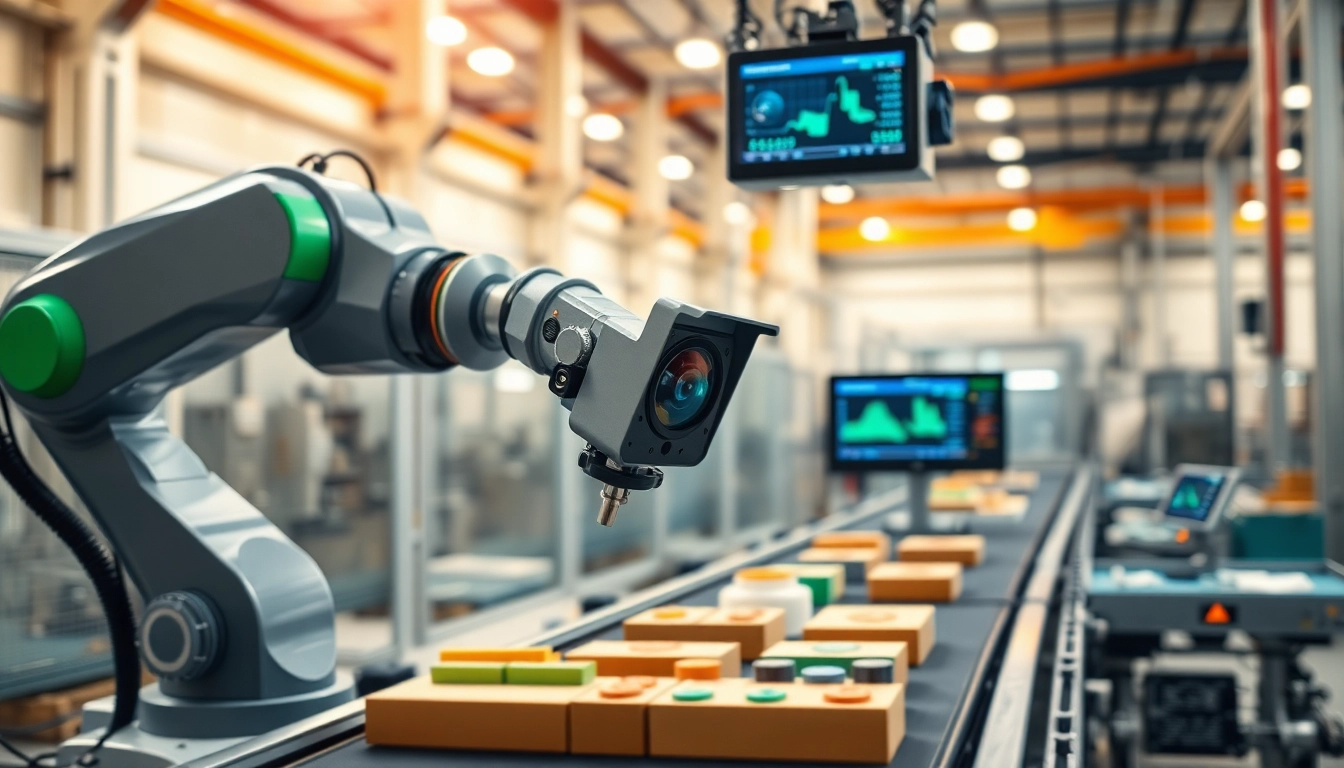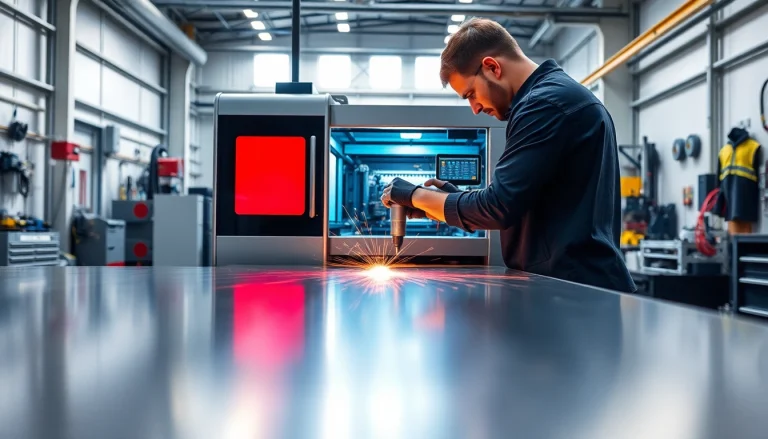What is Machine Vision?
Definition and Basic Principles
Machine vision is a subset of artificial intelligence that allows machines to interpret and understand visual information from the environment. It utilizes imaging-based technologies to enable automatic inspection, analysis, and decision-making in various industrial applications. Essentially, machine vision integrates hardware and software components that work together to process visual data, enabling machines to “see” and analyze their surroundings much like humans do. The technology relies on cameras, sensors, and sophisticated algorithms to perform complex analyses, allowing it to provide critical insights in real-time.
Key Technologies Used
The core technologies that power machine vision systems include:
- Cameras: High-resolution cameras are essential for capturing clear images of objects. The choice of camera can significantly influence the quality of the visual data processed.
- Lighting: Proper lighting is critical for enhancing image quality and reducing shadows or glare that can interfere with the analysis.
- Image Processing Software: Advanced software algorithms process the captured images, allowing for real-time analysis and interpretation. This software often incorporates machine learning models to improve detection and classification accuracy over time.
- Data Storage Solutions: To handle the vast amounts of data generated, effective storage solutions are necessary. This may include databases designed specifically for managing image data.
Comparison with Computer Vision
While machine vision and computer vision are often used interchangeably, they have distinct differences. Machine vision primarily focuses on specific industrial tasks such as quality control, defect detection, assembly guidance, and automated inspections, while computer vision encompasses a broader range of applications beyond industrial contexts, such as facial recognition, scene reconstruction, and autonomous navigation.
Machine vision applies processes that are deterministic and predetermined, functioning within controlled environments and set parameters. In contrast, computer vision often deals with unpredictable environments and may utilize artificial intelligence (AI) and deep learning techniques to adaptively learn from data.
Applications of Machine Vision
Quality Control in Manufacturing
One of the most prevalent applications of machine vision is in quality control within manufacturing settings. By enabling automated inspections, machine vision systems help manufacturers detect defects in products at a much faster rate than human inspectors. For example, industries manufacturing electronic components can use machine vision systems to identify flaws in circuit boards by checking for misplaced or missing components. Additionally, visual inspection can be applied to food production, where it ensures product consistency and compliance with health regulations.
Automation in Packaging and Sorting
Machine vision systems also play a crucial role in packaging and sorting applications. In the logistics sector, these systems are employed to read barcodes or QR codes, streamlining the process of sorting packages and ensuring they reach the correct destinations. In packaging, machine vision can verify that labels are applied correctly, and that the packaging process adheres to specific standards, thus enhancing productivity and minimizing errors.
Integration in Robotics
Robotic systems equipped with machine vision capabilities can perform tasks that require visual feedback, such as picking and placing items on a production line. These robots can navigate complex environments, adjusting their actions based on real-time visual input. For instance, robots in warehouses utilize machine vision for locating and identifying products to facilitate faster order fulfillment, proving to be essential in e-commerce operations.
Benefits of Implementing Machine Vision
Increased Efficiency and Accuracy
The implementation of machine vision technology offers significant improvements in efficiency and accuracy. By automating visual inspections and analyses, manufacturers can achieve higher throughput rates while reducing human errors. Studies have shown that industries adopting machine vision report improvements in production speed by up to 50%, as these systems can operate continuously without fatigue.
Cost Savings and ROI
Investing in machine vision systems can lead to substantial cost savings over time. By minimizing production errors and ensuring high product quality, companies can decrease the costs associated with recalls and complaints. Moreover, the improved inspection speeds reduce labor costs, and the timely identification of defects can prevent waste by eliminating flawed products early in the production process, contributing to a positive return on investment (ROI).
Real-time Monitoring and Data Collection
Machine vision systems provide the capability for real-time monitoring and data collection, which is invaluable for performance analysis and decision-making. These systems continuously gather data on product quality, operational speed, and process efficiency, allowing organizations to make informed adjustments to optimize production. Over time, this data can also support predictive maintenance, helping to prevent equipment failures before they occur.
Challenges Faced with Machine Vision Systems
Technical Limitations and Solutions
Despite the many advantages, implementing machine vision systems also comes with challenges. Technical limitations may arise, such as the inability to operate under certain lighting conditions or difficulties stemming from complex backgrounds that may confuse the imaging algorithms. Solutions include investing in superior lighting mechanisms or utilizing advanced algorithms capable of compensating for environmental variances.
Integration with Existing Systems
Integrating machine vision systems with existing workflows and processes can present challenges, particularly in older manufacturing facilities. Ensuring compatibility with legacy equipment and software requires careful planning and may necessitate an upgrade of hardware and integration of new processes. Gradual implementation strategies can help ease this transition, allowing personnel to adapt progressively.
High Initial Costs and Budgeting
Another hurdle is the high initial costs associated with purchasing and implementing machine vision technology. Organizations must budget for not only the technology itself, but also for installation, training, and maintenance. Prioritizing a clear roadmap that outlines potential savings and efficiencies will help decision-makers weigh the upfront investment against long-term benefits.
Future Trends in Machine Vision Technology
AI and Machine Learning Integration
The future of machine vision is closely intertwined with advancements in artificial intelligence (AI) and machine learning (ML). By utilizing these technologies, machine vision systems will become increasingly adept at recognizing patterns and making complex decisions based on their observations. This will expand the range of applications, allowing machine vision to tackle even more sophisticated tasks and improve overall effectiveness in diverse environments.
Advancements in Sensor Technologies
As sensor technologies continue to evolve, we can expect enhanced capabilities in machine vision systems. Developments in high-definition imaging, thermal imaging, and multispectral sensors will improve the precision and reliability of visual data capture, allowing for more thorough inspections and analyses across various industries.
Potential in Autonomous Systems
Machine vision will play a pivotal role in the development of autonomous systems, such as self-driving vehicles and drones, which rely on accurate perception of their environment. As these technologies advance, machine vision will become integral to navigation, obstacle detection, and real-time decision-making, leading to safer and more efficient operation in various applications.























+ There are no comments
Add yours